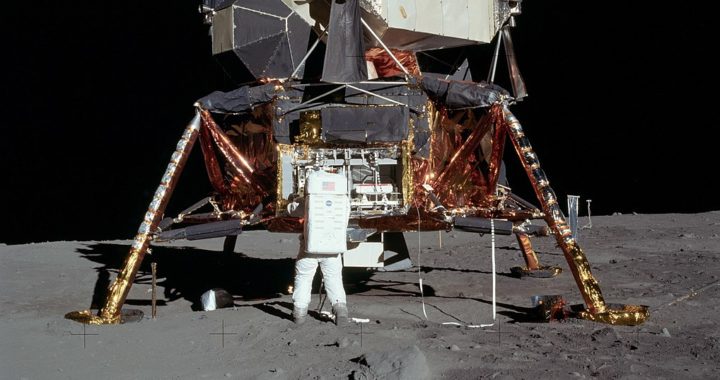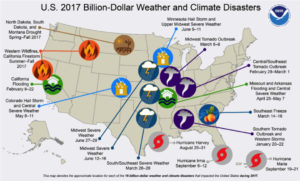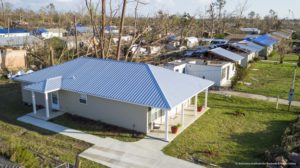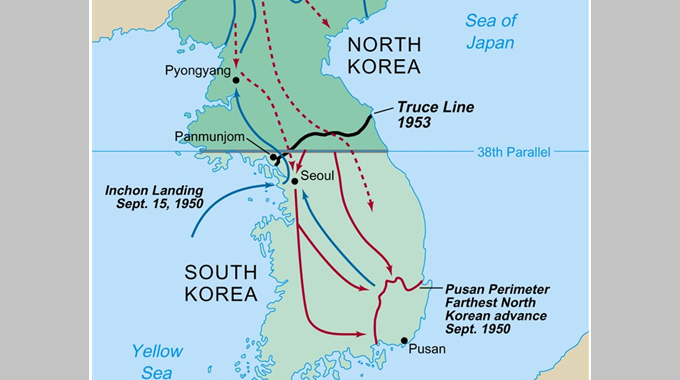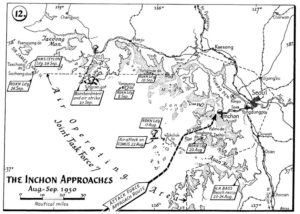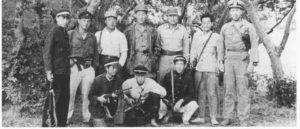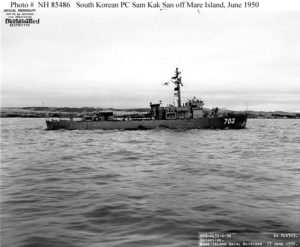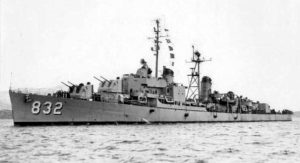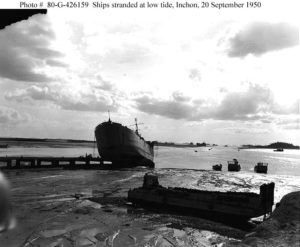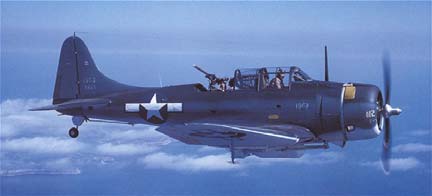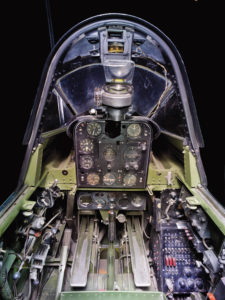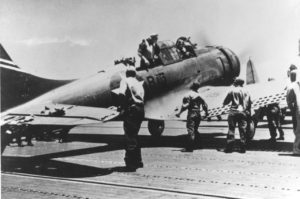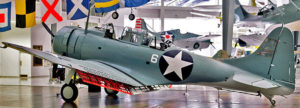It seemed like a good idea at the time.
It was April 1961. The Soviet Union’s Yuri Gagarin had just become the first person to orbit the Earth. America’s nascent Mercury program had not yet launched a single astronaut into space. It would be more than a year until John Glenn would become the first American in orbit.
Until Gagarin’s flight there had been no U.S. government push to counter the Soviet space program. In October 1957, the unanticipated launch of the Soviet Sputnik – the first satellite to be launched into orbit by any nation – had sparked a wave of soul-searching by American commentators. But the U.S. government response had been measured and low-key. President Dwight Eisenhower was uninterested in engaging in a costly public space race for which the prize would be little more than prestige.
By 1958 America had two space programs that were making steady and sustainable progress. One program was an Air Force research effort into hypersonic flight centered on the X-15 rocket plane while the second program was the newly-created National Aeronautics and Space Administration’s (NASA) Project Mercury – America’s first manned spaceflight project. Money was tight and both projects were pushing the boundaries of technology, but both were progressing. Eisenhower had no interest in an expensive crash program focused on catching the Soviet Union that would inject a heavy dose of Cold War politics into aerospace research efforts. At first, neither did President John F. Kennedy, who took office in January 1961. In the middle of his inaugural address, Kennedy even suggested that America and the Soviet Union might work together to explore space.
But Kennedy was taken aback by the large and overwhelmingly positive international response to Gagarin’s flight on April 12, 1961. He believed that a continuous string of Soviet space firsts – spectaculars, he called them – could significantly damage America’s standing around the world and would provide the USSR with a powerful advantage in the ongoing Cold War. Kennedy was a thoughtful and dispassionate politician, but he was a product of his times, which is to say he was an ardent cold warrior.
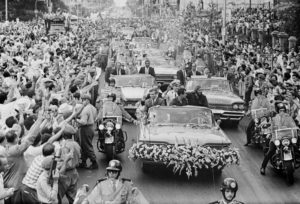
Havana. Cuba. First cosmonaut Yuri Gagarin officially welcomed in Cuba. Photo TASS / Valentin Sobolev
A Popped Cork
The U.S. space program had already experienced its own string of “spectaculars,” but they weren’t the kind of results that NASA and Kennedy were looking for.
On December 1957, two months after the Soviets succeeded in putting Sputnik into orbit, America’s first attempt at launching a satellite – Vanguard 1A – failed spectacularly when the rocket lost thrust shortly after liftoff. Having risen only four feet off the launch pad, the rocket fell back and exploded, throwing the satellite a short distance away where it began transmitting its beacon signal.
In November 1960, a similar accident occurred during a test launch of a Mercury-Redstone rocket – the vehicle that was slated to carry America’s first astronauts. With 500 invited guests watching in stunned silence, the rocket’s engine inexplicably shut down two seconds after liftoff. The vehicle had barely left the launch pad – its height was estimated at four inches – when the engine cut off and it slowly settled back down on the pad, balanced precariously on its now-silent engine. Reacting to the shutoff, the capsule’s automatic safety systems engaged. First, the capsule’s rocket-powered escape tower was jettisoned, blasting away from the capsule. Then, with rocket and capsule still teetering on the pad, the capsule’s parachutes deployed, draping the unsteady vehicle in shrouds of billowing nylon. In his 1979 book, The Right Stuff, Thomas Wolfe famously likened the event to a cork popping out of a bottle of Spumante.
Less amusing and decidedly more alarming was the failure of a Mercury-Atlas test launch on April 25 1961 – less than two weeks before the first manned Mercury flight would take place, though that flight would use a Redstone rocket. Minutes after launch, the Atlas rocket malfunctioned and had to be destroyed, raining debris over the launch complex and nearby Cocoa Beach.
Changing the Narrative
Of course, America’s testing failures were public knowledge, while the Soviet program was shrouded in secrecy which hid errors, mistakes and other misfortunes from the public and, more gravely, from American intelligence agencies. In truth, NASA was not significantly behind the Soviets in any aspect of space exploration, though that was not clear at the time. But perceptions matter, and Kennedy wanted to change the common narrative that the USSR was leading the United States. He hoped that a NASA spectacular – the good kind – would re-establish American pre-eminence in science, technology, and engineering.
So, Kennedy asked NASA officials what milestone could America reach before the Soviets. The answer: a Moon landing. Accordingly, on May 25, 1961 – twenty days after Alan Shepard became the first American in space – Kennedy publicly announced his goal of landing a man on the Moon and returning him safely to Earth before the end of the decade.
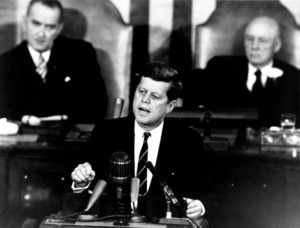
President John F. Kennedy in his historic message to a joint session of the Congress, on May 25, 1961 declared, “…I believe this nation should commit itself to achieving the goal, before this decade is out, of landing a man on the Moon and returning him safely to the Earth.” Photo credit: NASA
Kennedy was prepared to pay for his vision. In July 1961, he submitted to Congress a new NASA budget that increased the agency’s spending authority by 89 percent and funded the start of construction of extensive space centers at Cape Canaveral and Houston. That was just the beginning. Congress followed the president’s lead and approved massive budget increases for NASA over the next several years. The agency’s budget, which had been a modest $500 million per year in 1960, reached $5 billion per year by 1965, fully 4.3 percent of the overall federal budget. Ultimately, Project Apollo would cost $151 billion (in 2010 dollars) and involve 400,000 workers.
The presidential challenge energized the news media and the nation, while the subsequent infusion of cash energized NASA. Suddenly, a program that had been quietly plodding along in relative obscurity was one of the highest priorities of the federal government. Kennedy made his intentions explicit in a November 1962 meeting, when he told NASA officials that the Moon landing was to be NASA’s top priority, and, along with defense, one of the two top priorities of the federal government.
Kennedy’s goal was ambitious yet achievable, and success would overshadow all the earlier Soviet ‘spectaculars.’ It was the quintessential Cold War program – technologically challenging, hugely expensive, and focused on short-term results rather than any long-range strategic vision.
What Could Possibly Go Wrong
While NASA met Kennedy’s goal – Apollo 11 landed on the moon on July 20, 1969 – the unintended consequences of making the program a centerpiece of the Cold War were dispiriting. And throughout the Cold War, there were always unintended consequences.
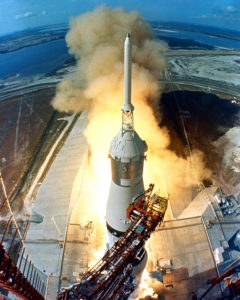
Apollo 11 liftoff, July 16, 1969. Photo credit: NASA
Flush with cash, backed by the president, popular with Congress and the public, NASA was unprepared for its new role as a Cold War standard bearer. Everything about the organization changed overnight: its budget; its management practices; the size of its workforce; its public profile; its political importance; and most importantly, the relentless pressure to meet deadlines. The technological challenges of lunar landings remained, but now they were accompanied by the need to learn an entire new way of operating.
Drafting NASA to serve on the front lines of the Cold War fundamentally and irrevocably changed the agency and America’s manned space program. With virtually unlimited resources the agency was willing to tolerate a greater level of waste and inefficiency. Under intense pressure to meet deadlines the agency accepted a higher level of risk for astronauts. With a total commitment to a lunar landing, the agency had no time for long-range strategic thinking. Through no fault of its own, NASA had traded a methodical and sustainable long-term approach to space exploration for a mad dash to an artificial and arbitrary finish line.
The Politics Changed
By linking its program to Cold War politics, NASA became vulnerable to changes in the political situation. If national priorities shifted, the agency might find itself adrift. Which is exactly what happened.
By 1963, the Cold War landscape had changed significantly. Appalled by the terrifying ease with which the United States and the Soviet Union had stumbled to the brink of nuclear war during the Cuban Missile Crisis in 1962, Kennedy was looking for a way to reduce tensions with Russia. In June 1963 he re-opened negotiations with the USSR to ban nuclear testing. The Test Ban Treaty would be signed in August of that year.
On June 10, 1963, Kennedy gave a speech titled “A Strategy of Peace” at American University in which he earnestly suggested ways that America and the Soviet Union could improve relations and lower the risk of nuclear war. He was clearly looking to defuse the Cold War.
With the political importance of the space program fading, Kennedy and Congress were growing concerned about the cost of Apollo. While generally popular, the program had faced criticism for years about the share of government funds it was consuming. Democrats and Republicans believed that there were more pressing needs for federal funding than a wildly expensive race to the Moon. In 1963, Congress had cut NASA’s budget by 10 percent, a harbinger of much more severe cuts to come.
On September 20 1963, Kennedy spoke before the United Nations General Assembly on the need to reduce tensions. He proposed several areas where the US and USSR could cooperate, including, “… joint efforts in the regulation and exploration of space. I include among these possibilities a joint expedition to the Moon.”
Kennedy’s call for a joint US-Soviet space program stunned Congress and NASA. The space agency was already struggling to manage the huge number of contractors involved in the program. Bringing in the Soviets would multiply the project’s difficulty, NASA officials told Kennedy. The Soviets themselves showed no interest.
Kennedy didn’t give up on the idea, and in November 1963 he directed NASA administrator James Webb to prepare a plan for cooperation in lunar landing programs. Before the end of the month, however, Kennedy was dead, assassinated in Dallas. Overnight the Apollo program became a memorial to the slain president, and changes to the program or cuts to its budget became unthinkable.
So, Apollo continued on as before, a high-visibility, crash program that was overwhelmingly focused on meeting an unrealistic schedule.
Safety Wasn’t Job One
NASA technicians and Apollo astronauts recognized the risks involved in pushing the program’s pace. Author George Leopold, in his 2016 biography of astronaut Gus Grissom, described the lethal impact of NASA’s fixation on Kennedy’s end-of-decade target as “Slipshod engineering, distracted management, poor quality control, (and) inattention to test data…”
According to Leopold, the pace and scale of the Apollo program, “… outpaced the ability of engineers and managers to keep up with details of arguably the largest technological endeavor since World War II.” The level of risk that NASA tolerated during Apollo far exceeded the level accepted during the Mercury and Gemini programs.
Astronaut Wally Schirra was concerned about crew safety, the inability to fix problems, and the tight schedule while NASA flight director Chris Kraft said, “We were willing to put up with a lot of poor hardware and poor preparation in order to try to get on with the job. And a lot us knew that we were doing that.“
Grissom, wrote Leopold, was especially concerned about the poor workmanship and poor design of the Apollo 1 capsule that he was to ride into space. Grissom and his crew spent months working with representatives of the spacecraft manufacturer to identify and repair problems with critical systems.
On January 27 1967, Grissom, Ed White, and Roger Chafee were killed when fire swept through their spacecraft during a launch rehearsal test. An extensive NASA review of the accident identified the cause of the fire and analyzed the entire Apollo program and its management. As a result of the fire, NASA created an Office of Flight Safety, independent of flight program management. The Safety Office would review all aspects of design, manufacturing, test and flight from a safety standpoint.
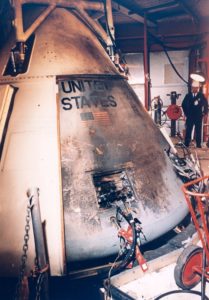
Apollo 1 capsule after deadly fire. Photo credit: NASA
Despite a delay of twenty months, during which NASA re-designed the Apollo command module and implemented numerous safety procedures, the agency met Kennedy’s goal when Apollo 11 landed on the Moon in July 1969.
We’re here. Now what?
By providing a clearly-defined goal and nearly unlimited resources, Kennedy’s involvement was critical to NASA’s short-term success. But by focusing so narrowly on the goal of a Moon landing before 1970, NASA traveled down a dead-end path.
Apollo’s hardware, procedures, processes, and management practices were optimized for landing on the Moon as quickly as possible. Once that was accomplished, the agency found itself adrift. Budgets were slashed, no further direction was provided by the White House, and the agency was saddled with a vast and expensive network of facilities and suppliers.
Within a year of Apollo’s historic mission, President Nixon canceled the final three planned Apollo moon landings. Between 1969 and 1972, twelve Americans walked on the moon. No American has gone beyond low earth orbit since.
NASA proposed to follow Apollo with a program to build a large space station to support an eventual manned mission to Mars. But funding for such a project was never seriously considered. NASA’s budget was cut to less than $3.5 billion per year, 25 percent of the share of the federal budget that the agency had enjoyed previously.
Without the urgency of a Cold War mission, NASA was forced to compete for funding with hundreds of federal agencies and programs. And so far, they haven’t done as well as they would like. From time to time ambitious programs to return to the Moon or explore Mars have been proposed, but none have come to fruition.
Had Apollo not been transformed into a Cold War asset, NASA’s manned spaceflight program would likely have continued on a slower, less expensive, more sustainable path that might have included additional exploration of the Moon, construction of a series of increasingly complex space stations in Earth orbit to master the skills needed to live and work in space, establishment of permanent colonies on the Moon, and preparation for manned missions beyond the Earth-Moon system.
April 23, 2020
For more information see:
Fishman, Charles; One Giant Leap: The Impossible Mission That Flew Us to the Moon; Simon and Schuster; New York; 2019.
Leopold, George: Calculated Risk: The Supersonic Life and Times of Gus Grissom; Purdue University Press; West Lafayette, IN; 2016.
Logsdon, John M.: John F. Kennedy and the Race to the Moon; Palgrave Macmillan, New York; 2010.
Logsdon, John M. “John F. Kennedy’s Space Legacy and Its Lessons for Today.” Issues in Science and Technology 27, no. 3 (Spring 2011). https://issues.org/p_logsdon-3/ Retrieved 7.24.2019.
Wolfe, Thomas; The Right Stuff; Farrar, Straus, Giroux; New York; 1979.
Achenbach, Joel; How Did NASA Put Men on the Moon: One Harrowing Step at a Time: https://www.washingtonpost.com/national/2019/06/19/how-did-nasa-put-men-moon-one-harrowing-step-time/?utm_term=.dabb26a16abf&wpisrc=nl_most&wpmm=1 Retrieved 7.21.2019.
Glass, Andrew; JFK Proposes Joint Lunar Expedition With Soviets, Sept. 20, 1963; https://www.politico.com/story/2017/09/20/jfk-proposes-joint-lunar-expedition-with-soviets-sept-20-1963-242843 Retrieved 4.21.2020.
Grush, Loren; Apollo Was NASA’s Biggest Win, But Its Legacy is Holding the Agency Back; https://www.theverge.com/2019/7/16/18663190/apollo-11-legacy-nasa-artemis-program-deep-space-human-exploration Retrieved 7.21.2019.
Kennedy, John F.; Address Before the 18th General Assembly of the United Nations, September 20, 1963: https://www.jfklibrary.org/archives/other-resources/john-f-kennedy-speeches/united-nations-19630920 Retrieved 4.20.2020.
Petty, Chris: Apollo, I Still Love You, but…; https://thehighfrontier.blog/2016/01/25/apollo-i-still-love-you-but/ Retrieved 7.26.2019.
Wall, Mike; Space Race: Could the U.S. Have Beaten the Soviets Into Space? https://www.space.com/11336-space-race-united-states-soviets-spaceflight-50years.html Retrieved 4.16.2020.
